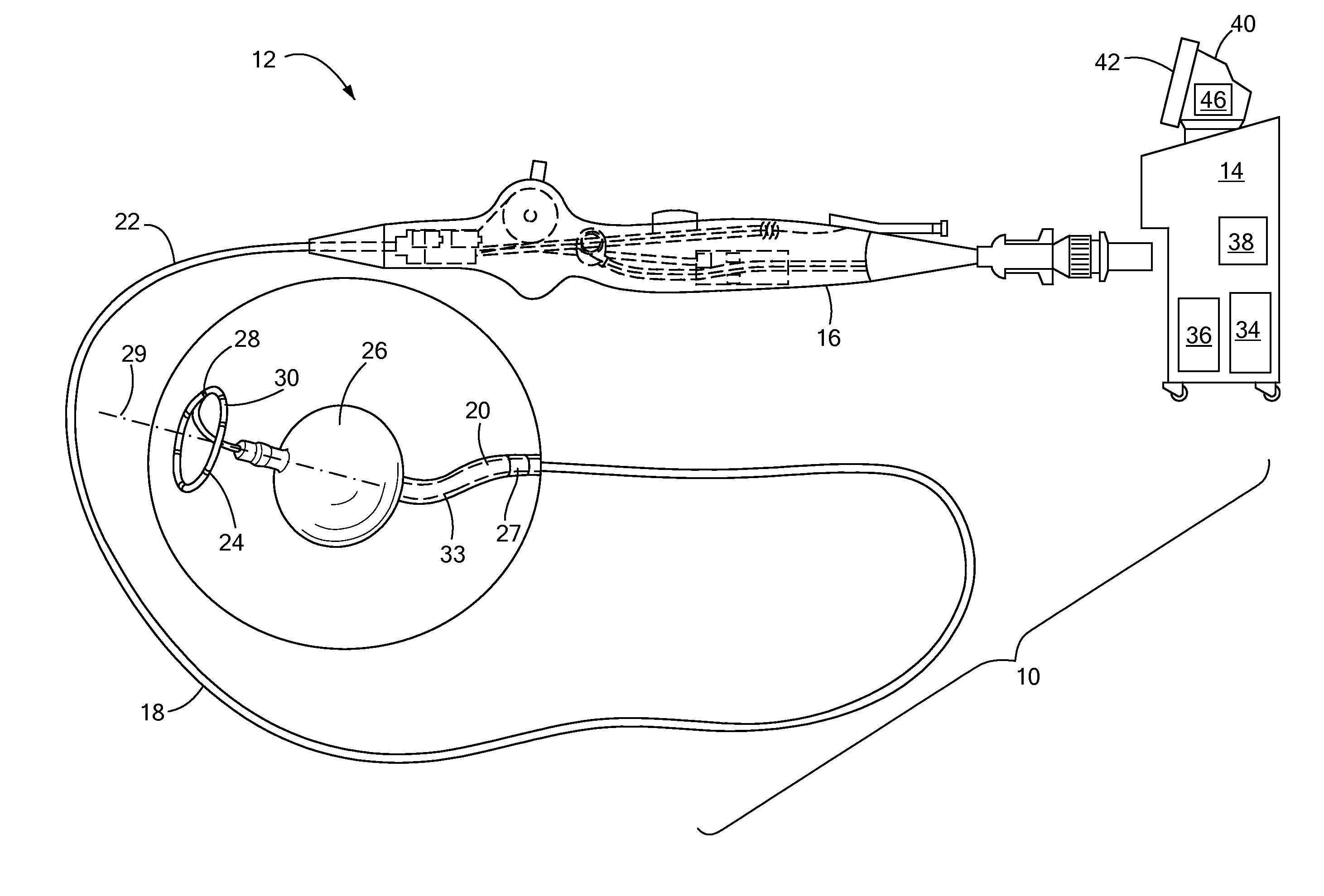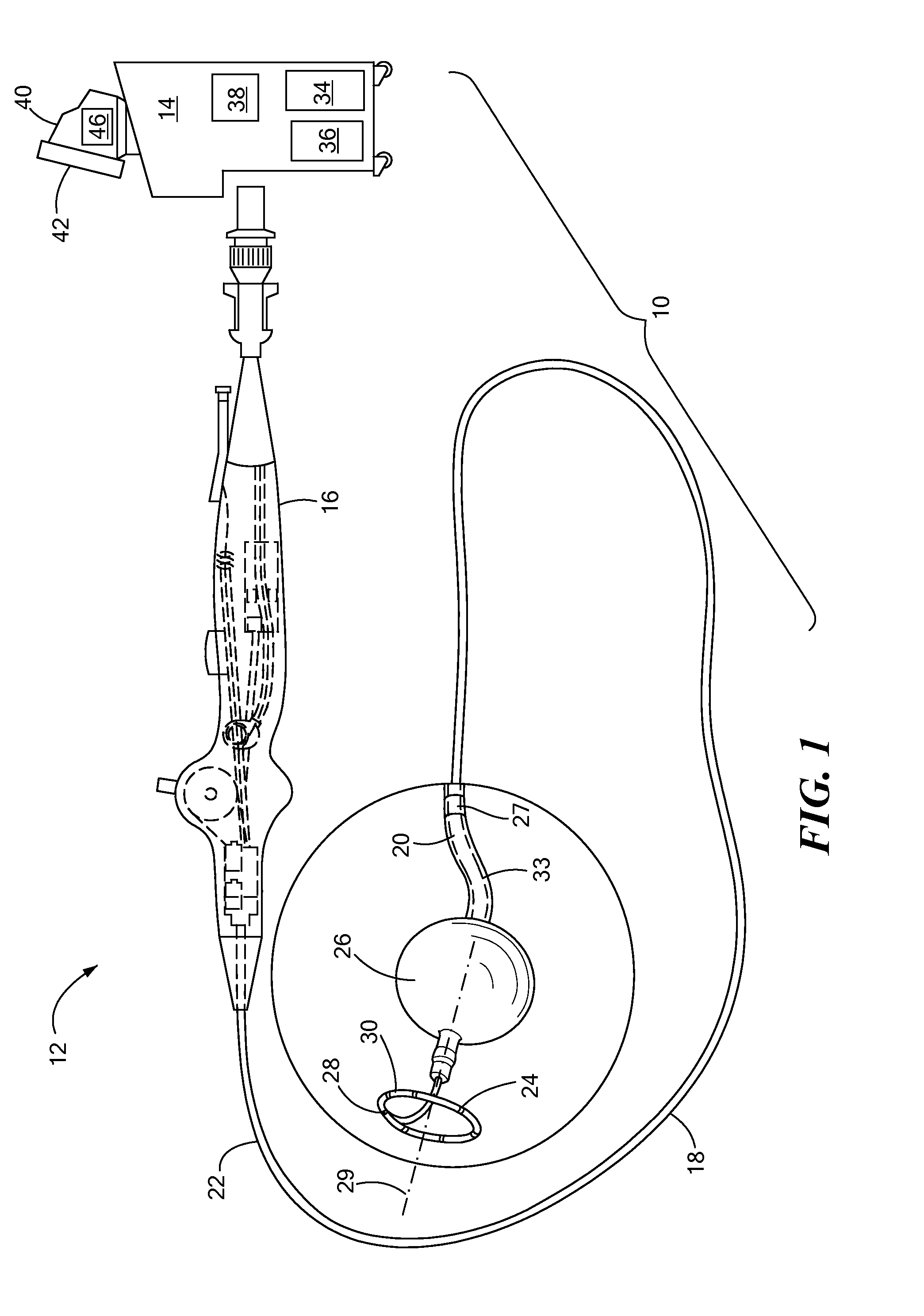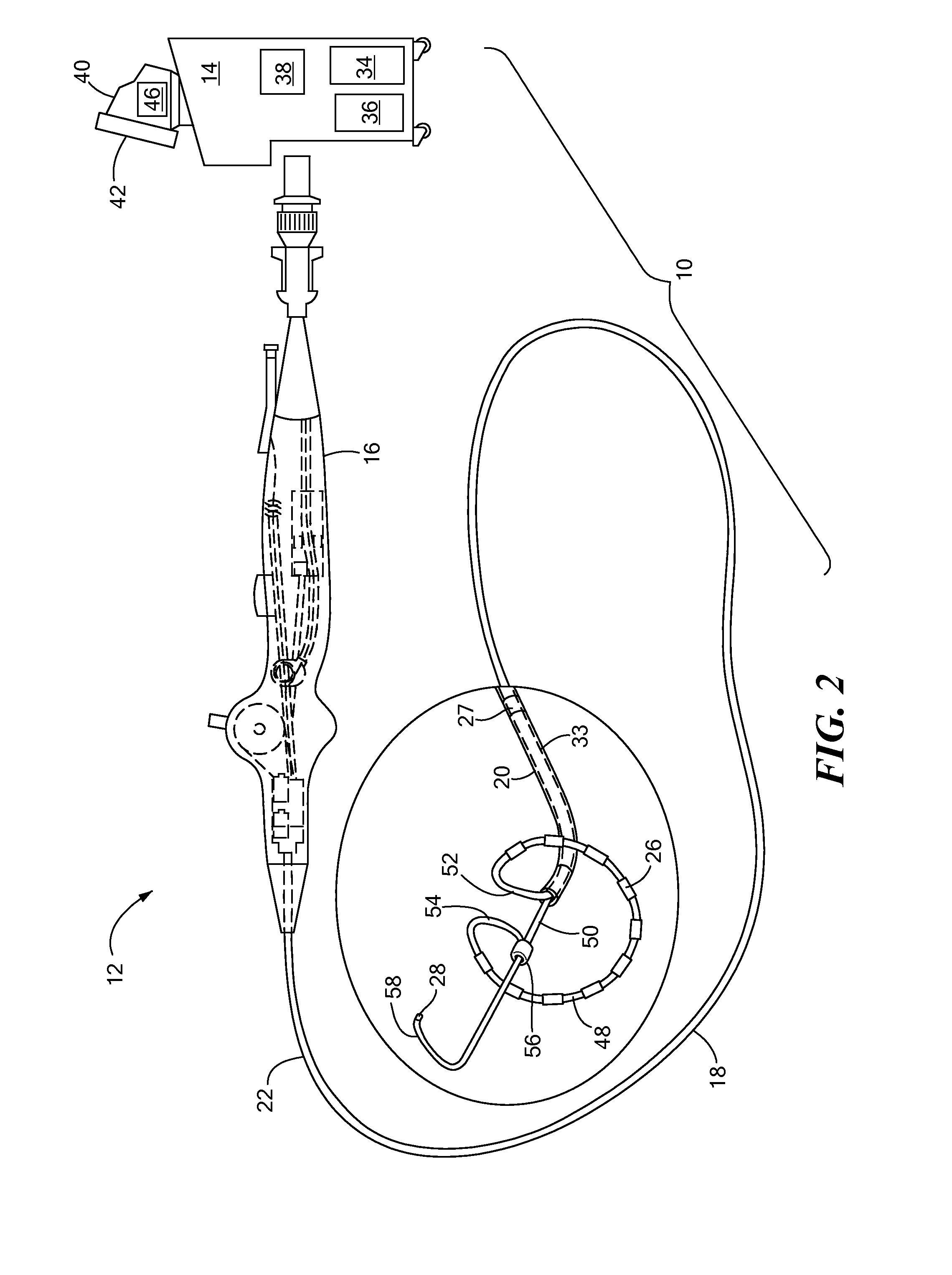Method and apparatus for using phonomyography to prevent nerve damage during a medical procedure
a technology of phonomyography and nerve damage, applied in the field of cardiac ablation procedures, can solve problems such as phrenic nerve injury, and achieve the effects of reducing the ablation energy delivered by the treatment element, preventing phrenic nerve injury, and increasing the output of the pacing electrod
- Summary
- Abstract
- Description
- Claims
- Application Information
AI Technical Summary
Benefits of technology
Problems solved by technology
Method used
Image
Examples
Embodiment Construction
[0021]Referring now to FIG. 1, a system including a medical device having a treatment element and an audio sensor is shown. The system 10 generally includes a treatment device 12 for ablating tissue and a console 14 that houses various system 10 controls. The system 10 may be adapted for radiofrequency (RF) ablation and / or phased radiofrequency (PRF) ablation (as shown in FIG. 2), cryoablation, ultrasound ablation, laser ablation, microwave ablation, or other ablation methods or combinations thereof.
[0022]The treatment device 12 may be a catheter with ablation, mapping, and audio sensing capabilities. The treatment device 12 may additionally include pacing capabilities. As a non-limiting example, the treatment device 12 may generally include a handle 16, an elongate body 18 having a distal portion 20 and a proximal portion 22, one or more recording electrodes 24 for detecting electrophysiological signals, one or more treatment elements 26 for ablating or thermally treating tissue, a...
PUM
 Login to View More
Login to View More Abstract
Description
Claims
Application Information
 Login to View More
Login to View More - R&D
- Intellectual Property
- Life Sciences
- Materials
- Tech Scout
- Unparalleled Data Quality
- Higher Quality Content
- 60% Fewer Hallucinations
Browse by: Latest US Patents, China's latest patents, Technical Efficacy Thesaurus, Application Domain, Technology Topic, Popular Technical Reports.
© 2025 PatSnap. All rights reserved.Legal|Privacy policy|Modern Slavery Act Transparency Statement|Sitemap|About US| Contact US: help@patsnap.com



